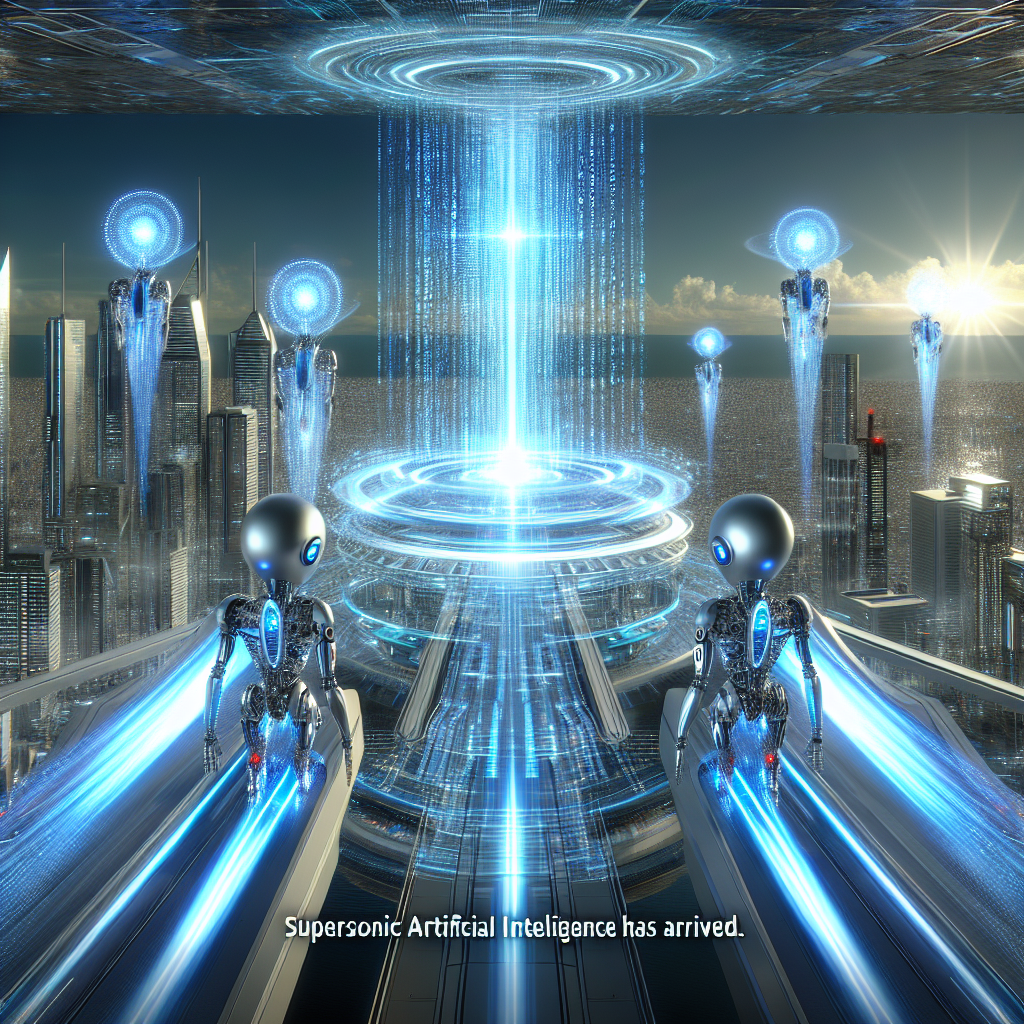The AI Revolution Accelerates: A New Era for the Workforce
Artificial Intelligence is no longer a futuristic fantasy—it’s reshaping industries in real-time. At the recent Panathenea festival, Dimitris Nikolaou, CEO and co-founder of Wondercraft, made a striking prediction: within the next two to three years, jobs such as secretarial services and call center roles will be largely overtaken by computers. This bold forecast reflects the rapid evolution of so-called “supersonic AI,” a term capturing the breakneck speed at which machine learning technologies are advancing.
Why Supersonic AI Is More Than Just a Buzzword
Supersonic AI signifies a new generation of artificial intelligence that far surpasses the capabilities of traditional automation. Unlike the scripted bots of the past, modern AI systems can reason, contextualize, adapt, and even emulate human conversation with near-perfect fluency.
Dimitris Nikolaou’s statement underscores the fact that these technologies are no longer experimental. Instead, they are being implemented in customer service, executive support, and administrative functions—roles that once relied heavily on human intuition and soft skills.
Goodbye Call Centers: How Automation Is Taking the Helm
The call center industry has long been a staple of global employment, particularly in countries offering outsourced customer service. But as AI matures, even complex queries can be resolved by intelligent voice agents and chatbots. The impact could be transformative:
- Cost Efficiency: Businesses can significantly reduce operating costs by transitioning to AI-driven support systems.
- 24/7 Availability: Unlike human agents, AI never sleeps—providing continuous support across all time zones.
- Scalability: With no need to hire and train new staff, scaling up becomes instantaneous and cost-effective.
In the coming years, the traditional role of customer service representative may shift toward more specialized, supervisory roles that manage and optimize AI performance.
Secretarial Roles Are Next in Line
Another sector on the verge of transformation is executive and administrative support. AI is becoming adept at handling the daily minutiae once managed by human assistants:
- Scheduling meetings
- Preparing briefs and summaries
- Document editing and email correspondence
- Task prioritization and project tracking
What was once delegated to human secretaries is now falling under the domain of smart digital assistants integrated with platforms like Google Workspace and Microsoft 365.
The Ethical and Social Implications
While technological advancements offer immense value, they also pose critical challenges. Automation threatens to displace millions of jobs, raising questions about the socioeconomic future of many communities. Nikolaou’s prediction forces us to confront a pressing dilemma:
How do we prepare workers for a world where AI executes their jobs faster, better, and more efficiently?
Governments and businesses must now invest heavily in:
- Reskilling programs to transition affected workers into new roles.
- AI literacy campaigns to bridge the knowledge gap and promote digital readiness.
- Partnerships with educational institutions to redefine curricula for the age of AI.
Innovation vs. Human Touch: Can AI Truly Replace Us?
Despite its rapid rise, AI still struggles with nuances like emotional intelligence, ethics in decision-making, and cultural sensitivity. While it may crunch data or handle transactional tasks flawlessly, it arguably lacks the deeper understanding necessary for jobs centered around empathy and human judgment.
The future of work is thus unlikely to be fully automated—but rather augmented. Humans will work alongside machines, leveraging their capabilities to enhance productivity while retaining the uniquely human traits that AI cannot replicate.
Will Supersonic AI Liberate or Limit Us?
Nikolaou’s statement is both a warning and a call to action. The momentum behind AI is irreversible, but it’s up to society to ensure this revolution is inclusive and constructive.
As supersonic AI arrives with breakneck speed, the key lies not in resisting change—but in mastering it.
Looking Ahead
In summary, the age of supersonic AI isn’t just approaching—it’s here. As we brace for a future defined by smart automation, industries must evolve, educational systems must adapt, and workers must be supported. Those who embrace the shift will lead in tomorrow’s economy; those who don’t may find themselves left behind.
AI is not just a tool—it’s now a collaborator, competitor, and catalyst for profound transformation in the way we live and work.



Leave a Reply